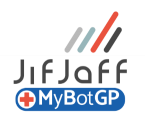Companies in the food industry are turning to robotic process automation (RPA) to streamline operations, reducing costs by automating tedious tasks. This frees employees to focus on higher value work.
What is robotic process automation?
RPA is an application of software robots. These are governed by business logic and structured inputs, aimed at automating business processes. A food company can configure the RPA software robots to capture and interpret applications for processing a transaction, manipulating data, triggering responses and communicating with other data systems. RPA can be used things as simple as automating a response to an email to deploying hundreds of software robots, each configured to automate a separate activity in an ERP platform.
Because Robotic Process Automation replicates the inputting behaviour of a worker, using the same software and user interfaces, there is none of the large-scale disruption associated with a technology roll out. A company may have spent years selecting and deploying software in their business. On top of this layers of security to protect the business. Robotic Process Automation allows for all this to remain in place. It does not need the opening up of systems to third-party APIs or the resulting potential security risks.
The ease of adopting Robotic Process Automation allows for focus on immediate benefits. These include cost reduction, operational efficiencies and reducing errors. RPA automates existing systems rather than replacing them.
The IT resource needed for an RPA rollout is low as there are no new IT platforms or services to be deployed. And the benefits are faster to be realised. Which makes Robotic Process Automation deployments easy to justify economically.
What are the benefits of RPA for the food industry?
In our experience, there is a very strong case for the use of RPA software robots in pharma and health. This is because of the masses of data agencies need to manage to be competitive and compliant; there is a lot of value software robots will add at both front and back end.
Here are some more specific examples.
- PROVIDER MANAGEMENT – Give yourself a clear view of your providers with help from automation. With virtual workers, you can easily resource and deliver the right health service to your customers, manage capacity to exactly meet demand and keep your costs in check.
- DATA MIGRATION – Effortlessly replicate data across your systems without keying information. Remove the risk of human error by using virtual workers to accurately automate information transfer and synchronization.
- MEMBER MANAGEMENT – Manage the membership of your food organization in detail with virtual workers. Evaluate your current membership, predict growth, manage on and off-boarding to ensure you are always one step ahead.
- Fraud prevention validation checks in real time
- Customer complaints logged and dealt with quicker leaving team members to handle escalated problems
- Data cleansing bread and butter for bots, churning through structured data and cleaning at up to five times the speed of a human
What are the pitfalls of RPA?
Installing software robots bots has taken a lot longer and is more complex than most organisations have hoped it would be. Expectations have been set too high with people thinking they will be able to automate 100% of the processes. And far too often the projects have failed because they have been scoped out by inexperienced staff. This leads to the selection of the wrong technology and the desired outcomes never being achievable.
These issues are avoided by working with a consultancy who not only understand Robotic Process Automation but also have experience in the food industry. While there is an overlap across all industries, the food industry has their own peculiarities which need to be accounted for when specifying, deploying and managing a Robotic Process Automation solution.
If you want to understand more about who RPA can help you please fill in the form below.
